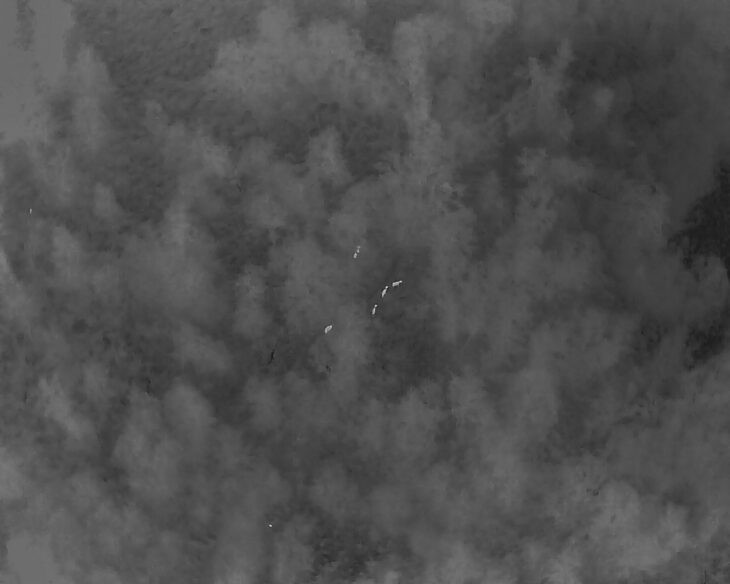Heat Seekers – surveying with drones
,
This article first appeared in Issue 113 of Scottish Wildlife. Become a member of the Scottish Wildlife Trust today and enjoy three issues of our magazine each year.
Katie Harrower from BH Wildlife Consultancy reveals how the use of thermal drone technology could potentially revolutionise the way that herbivore surveys are conducted over large areas.
With woodland creation and habitat restoration gathering pace across the UK, the need for technology to assist and provide accurate survey data is becoming increasingly important. In particular, knowing how many browsing herbivores are in an area is key when making land management decisions – with the data helping to shape the course of future action.
Given their browsing habits, various species of deer are a particular focus. Unlike roe deer that are territorial and tend to stay in one area, it is known that red, fallow and Sika deer are all transient species that can range across large areas. Understanding the movement of these animals helps paint a better picture of population numbers and browsing habits.
Increasingly, we are being asked to carry out landscape-scale population counts, often involving multiple landowners, using thermal imaging drones. The largest survey to date was nearly 60,000 hectares in Coigach & Assynt which was commissioned by the Scottish Wildlife Trust and funded by the Scottish Government’s Nature Restoration Fund (administered by NatureScot).
The drones used for these surveys are able to zoom in close to the animals using a powerful optical zoom when a heat signature is detected. The wildlife is then recorded accurately using a GIS-based programme. The resolution of the imagery allows the operators to identify the species, sex and even age class of most deer detected. Such data can help to inform management decisions through highlighting an unnaturally high number of male or female deer, or show which species of deer are most abundant. Sometimes the findings even show different species living in herds together (such as red and Sika deer).
Such counts can be complex to organise, with many logistical constraints. It’s important, for instance, that surveys are carried out methodically and quickly to avoid deer movement and double or under counting. This normally means that a team of operators need to be involved and that they survey the area in a tactical way to minimise deer movement. And, of course, weather can also play a huge part in the success or otherwise of such landscape-scale surveys. If there are days when the weather is unsuitable to fly during the survey period, it can make the results less reliable and reduce confidence in the final figures.
Despite the challenges, there are clear benefits of gathering data over a large area. This approach encourages neighbouring landowners to work together to understand deer population dynamics across a wider landscape. It can also clarify on overall numbers and reduce conflict between landowners with differing objectives, be that forestry, farming, nature restoration or sporting.

The data collected can then support the need for more stringent herbivore control if numbers are high in an area where environmental objectives are not being met and can provide accurate evidence/data to back up claims if numbers are in dispute. Similarly, if numbers are lower than expected then control measures can be adjusted accordingly.
Repeating these controlled surveys can reveal trends and changing population dynamics over time. We often find changes in distribution, density and species breakdown when we return to the same areas. The increase of Sika deer in the north and west Highlands is of particular note. On occasion we find new or uncommon species while conducting these surveys, including detecting populations of feral boar in locations that were previously not known to have them.
Another project we have been developing to aid the thermal drone surveys is the ability to integrate machine learning into the drones and have the machine identify animals automatically. The model is being trained to recognise all six deer species present in the UK, as well as all other native mammals. This AI technology could be particularly beneficial if large herds of deer are encountered as it will identify and count them quickly, further reducing the risk of deer being missed due to them moving.
We have witnessed a great appetite across government agencies, environmental NGOs and individual estates to obtain such accurate survey data on their land. Joined up thinking between different landowners and collaboration based on data can help smooth areas of potential disagreement and help to build trust between all parties. Best of all, it’s positive to see how land managers are using the data gathered to help inform their decisions to improve the quality of habitat for all wildlife.
Katie Harrower is director of BH Wildlife Consultancy
bhwildlifeconsultancy.com
